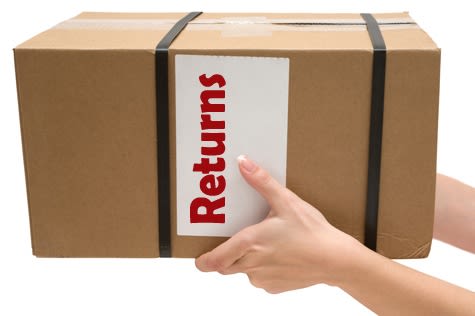How does it work

en
 English
English
 Deutsch
Deutsch
 Italiano
Italiano
08 June
Dressing to impress is back on the agenda. Consumers are refreshing their wardrobes for work, social events, and holidays. Unfortunately, not every new purchase is a hit, as brands know all too well.
Yes, we are talking about returns, that unavoidable cost of business in today’s ecommerce world.
With more people shopping online than ever before, returns are reaching dizzying heights, so what’s a brand to do?
Here are four ways fashion and apparel retailers can reduce returns.
1) Understand Why Customers Return Items
You can’t address a problem if you don’t know its cause. The more questions you ask at the point of returns, the better. This might reveal that:
Your sizes differ to the industry norm and this is causing higher return rates
You are unintentionally incentivising returns through your customer experience
Prices are too low, so customers see your products as disposable
Building a strong feedback loop into your returns process can uncover why customers are selecting that route. Another approach is to speak to serial returners – ask them why they return items regularly. This can reveal actionable insights.
2) Add Friction
If you want to significantly stop returns, build friction into the process. Subtle inconvenience can be all a customer needs to rethink their decision to return a product.
For example, a customer could be undecided about their new dress, but they are a habitual returner so that’s what they default to doing. Elongating the returns process could be all that’s needed to change their behaviour.

3) Subsidise Returns
Free returns. Love them or hate them, they are a big winner for customers. They are also very expensive to maintain as you grow.
Stopping free returns completely isn’t a possibility for most brands, however you could explore a programme where your customers who are prepared to pay for free delivery and returns subside those customers that are less willing to do so.
This might not stop returns entirely, but the strategy can reduce their frequency.
4) Sustainability Helps
At ShipStation, many of our fashion and apparel customers are investing heavily in sustainabilty and as a result, some are encouraging their own customers to return items less often for the good of the planet. This not only strengthens a retailer’s sustainability credentials but also delivers cost savings and operational efficiencies.
However you approach returns, remember that customers ultimately want to love the products they buy from you. Providing an excellent returns experience is important but so is identifying ways to keep your products in customers’ wardrobes.